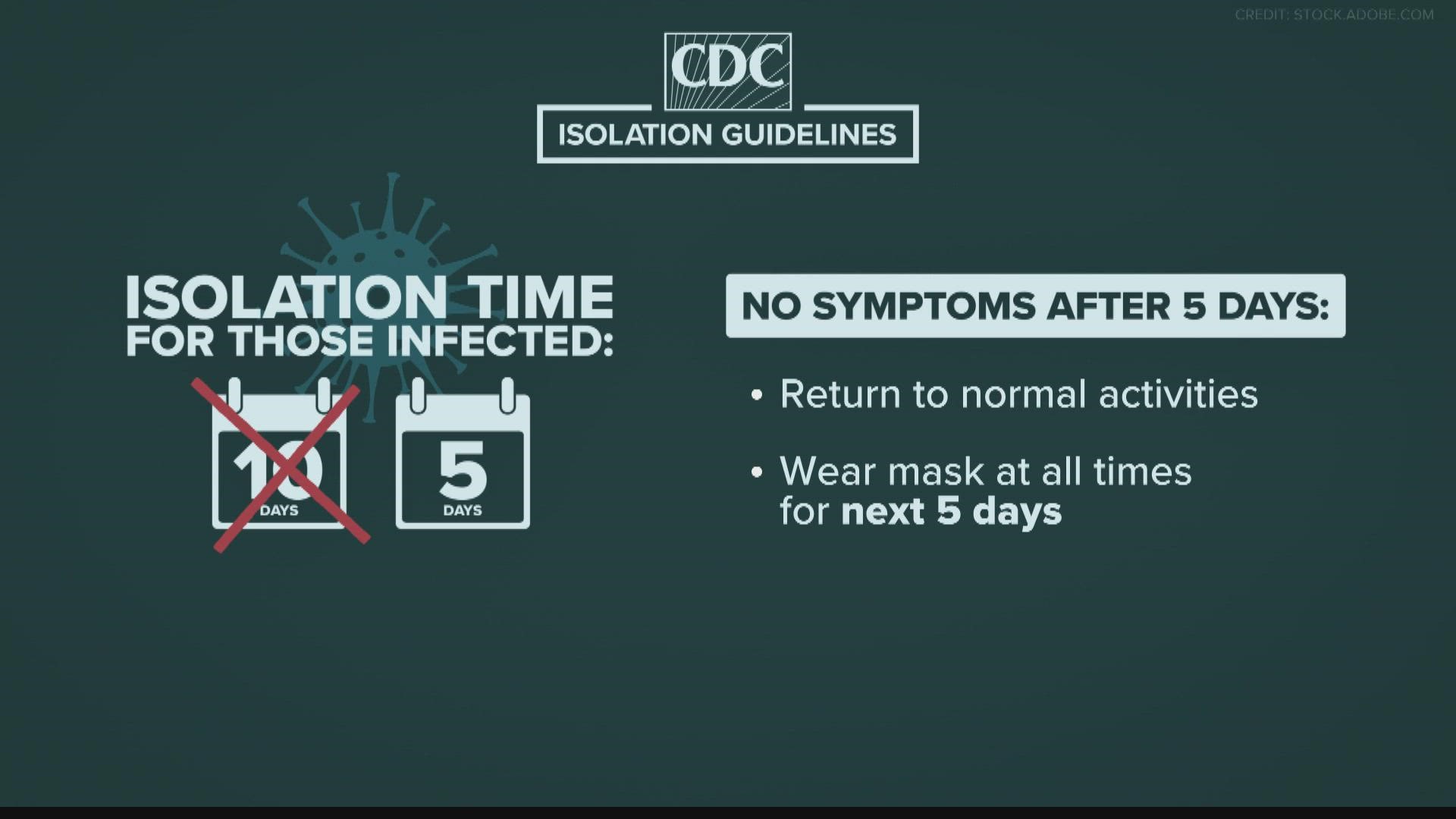INDIANAPOLIS — The CDC is cutting its isolation period in half from 10 days to five days if the person isn’t showing symptoms.
This comes as the highly contagious omicron variant fuels a new surge in cases, causing an increased need for quarantines. In return, it has disrupted severely short-staffed industries like hospitals and airlines.
“If you look at the safety of the public and the need to have society not disrupted, this was a good choice,” said Dr. Anthony Fauci, the top U.S. infectious disease expert.
Here’s what the new recommendations say:
If you test positive, you can isolate for five days instead of 10.
After that, if you don’t have symptoms, you can return to normal, but you need to wear a mask at all times for another five days.
If you do have symptoms, it’s recommended you stay home until you feel better.
The guidance is similar for those who are in close contact. If you are boosted, you can skip quarantining and wear a mask for at least 10 days.
If you are not boosted, you need to quarantine for five days and see if symptoms occur.
This is based on new data that says people are most infectious two days before and three days after symptoms develop.
“What these guidelines are doing is getting ahead of this omicron surge we are expecting by allowing people to be infectious for their few days, and then, they can come back to work while wearing a mask and taking precautions,” said Dr. Brian Dixon, the director of public health informatics at the Regenstrief Institute.
With more flexibility in the guidelines, Dixon believes high-quality masks play an important role.
“Cloth masks are somewhat effective, but the surgical masks are more effective,” he said.
These new recommendations are also expected to impact schools in the upcoming year.
“Probably in early January, we will see school guidelines get revised that will allow students to return sooner if they are wearing masks and have that five days of isolation instead of 10 days,” Dixon said.
Right now, the CDC guidance is only a recommendation and not a mandate, leaving the final decision up to employers, schools and states.

